Abstract
The histories of 269 patients whose death certificates did not mention a drug as the cause of aplastic anaemia or agranulocytosis were investigated. Eighty-three deaths were probably caused by drugs, the most common cause of aplastic anaemia being treatment with phenylbutazone (28 deaths) and oxyphenbutazone (11 deaths). Thirteen out of 17 deaths from agranulocytosis were attributed to co-trimoxazole treatment. A separate survey of general practitioners' prescriptions enabled the mortality to be estimated. With the addition of one death due to oxyphenbutazone and four deaths due to phenylbutazone that were reported independently to the committee, the mortality from oxyphenbutazone was 3-8 per 100 000 and from phenylbutazone 2-2 per 100 000. With phenylbutazone the rates varied from under 1 death per 100 000 for men aged under 65 years to 6 per 100 000 for women aged 65 and over. Small numbers precluded estimates for oxyphenbutazone in these subgroups, although a similar trend was suggested. No particular indication for treatment seems to carry a higher risk, the main concern being the use of these two drugs in elderly patients.
Full text
PDF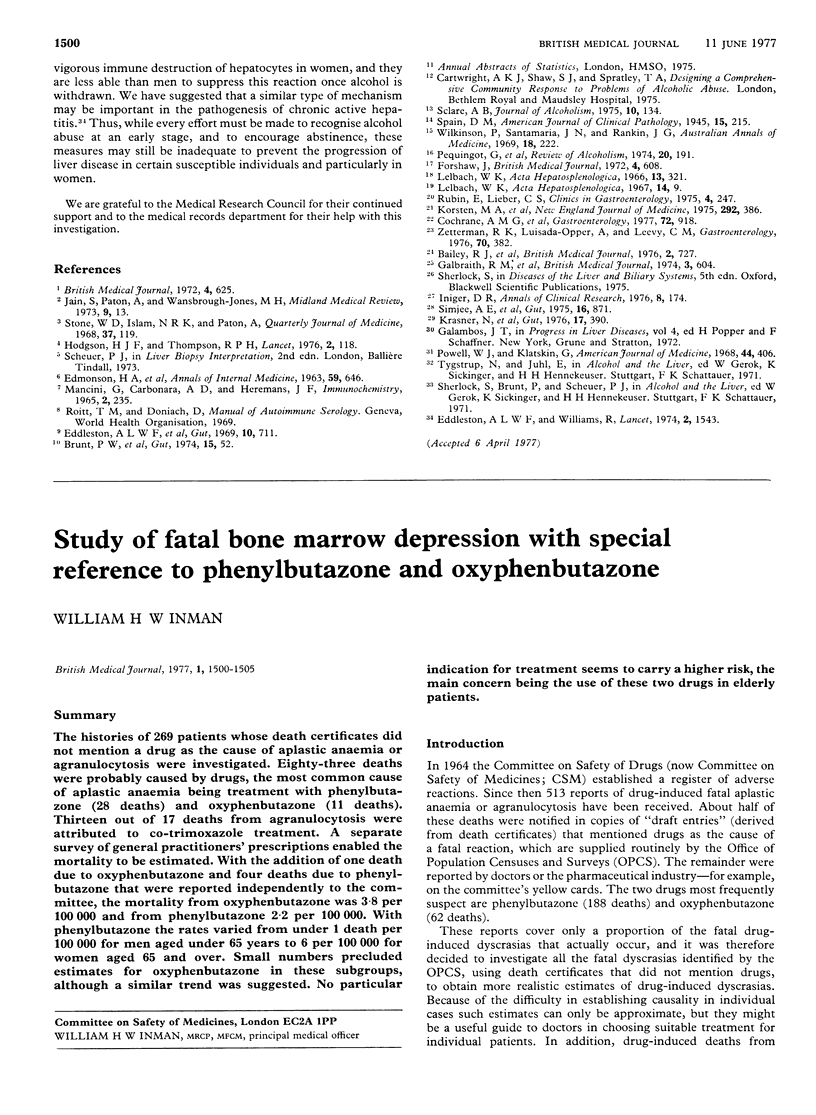
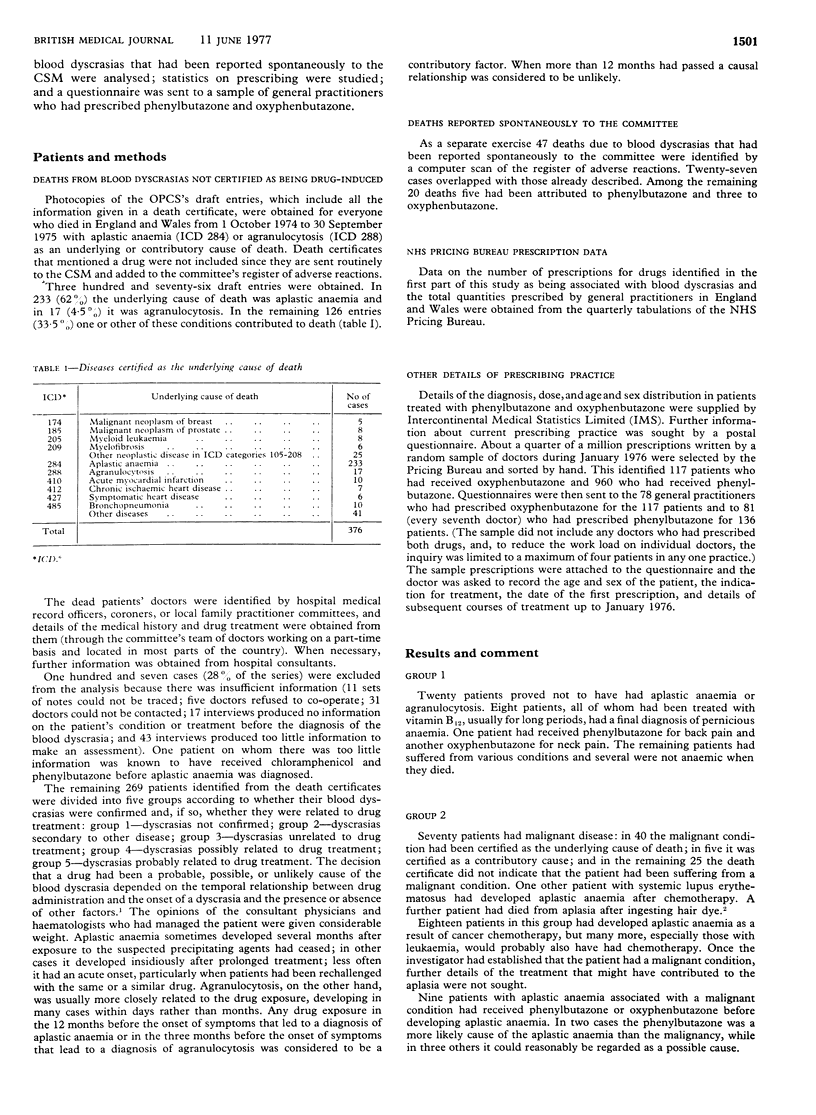
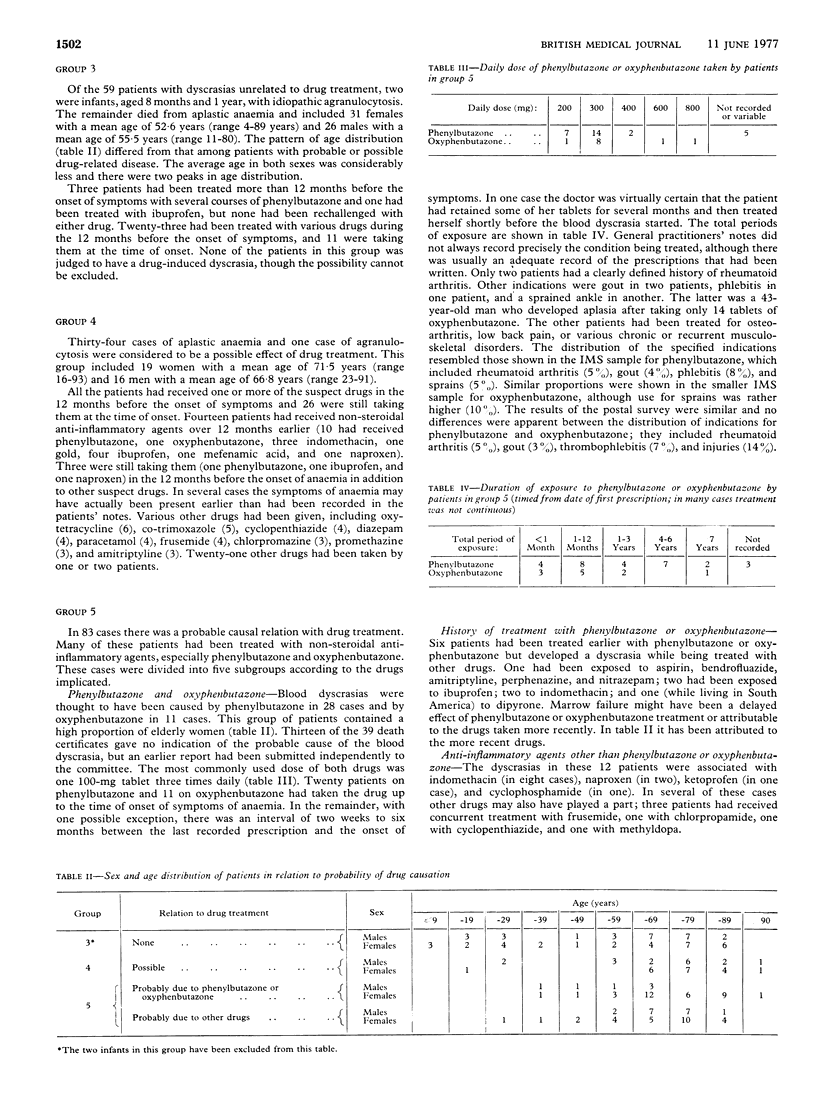
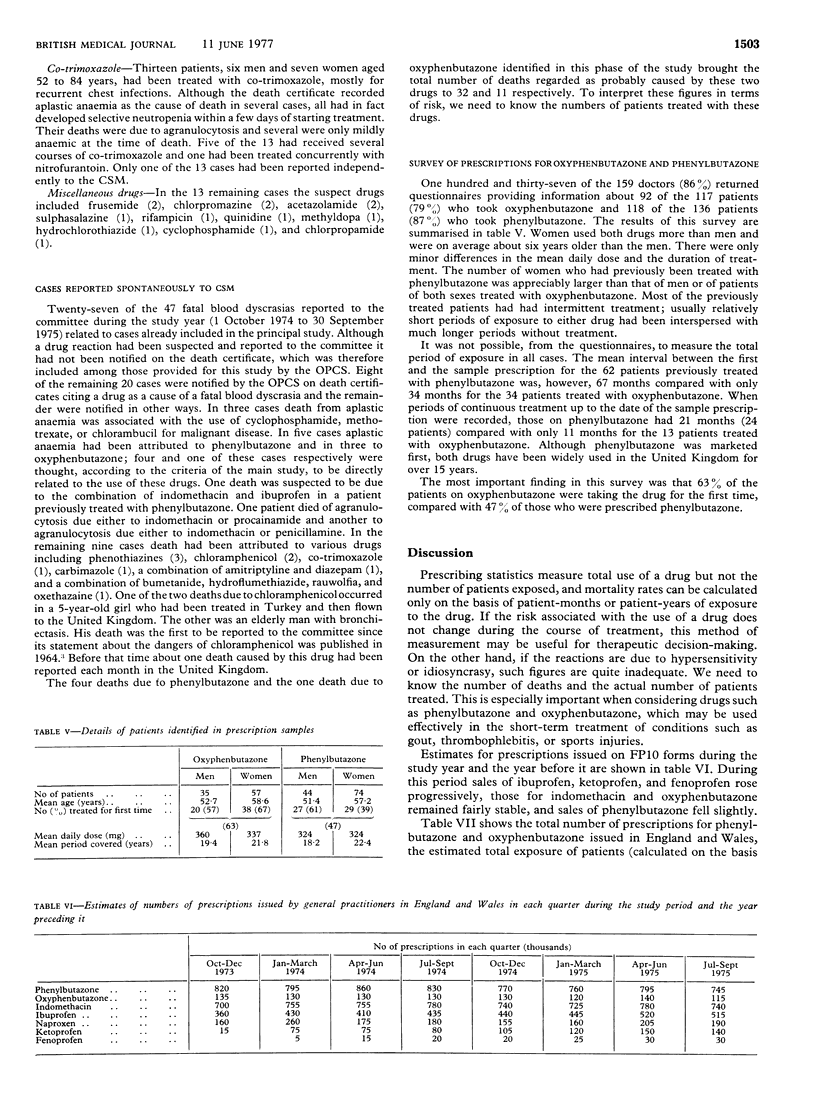
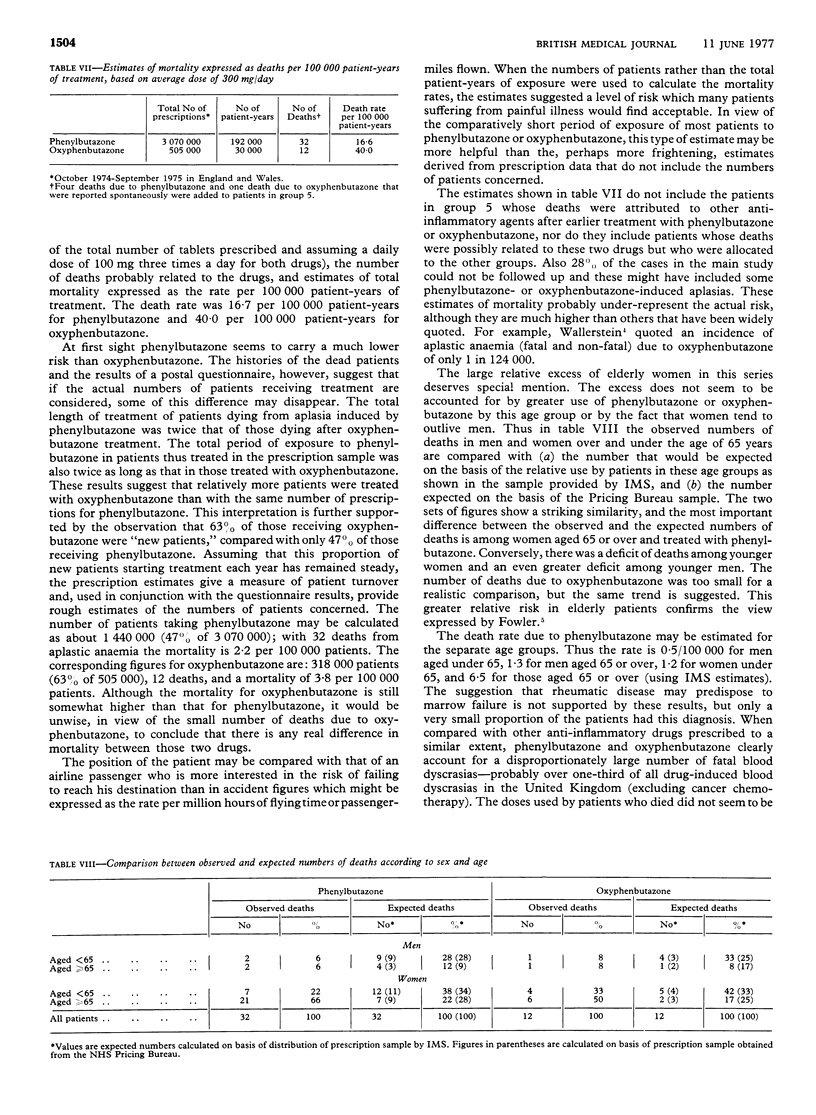
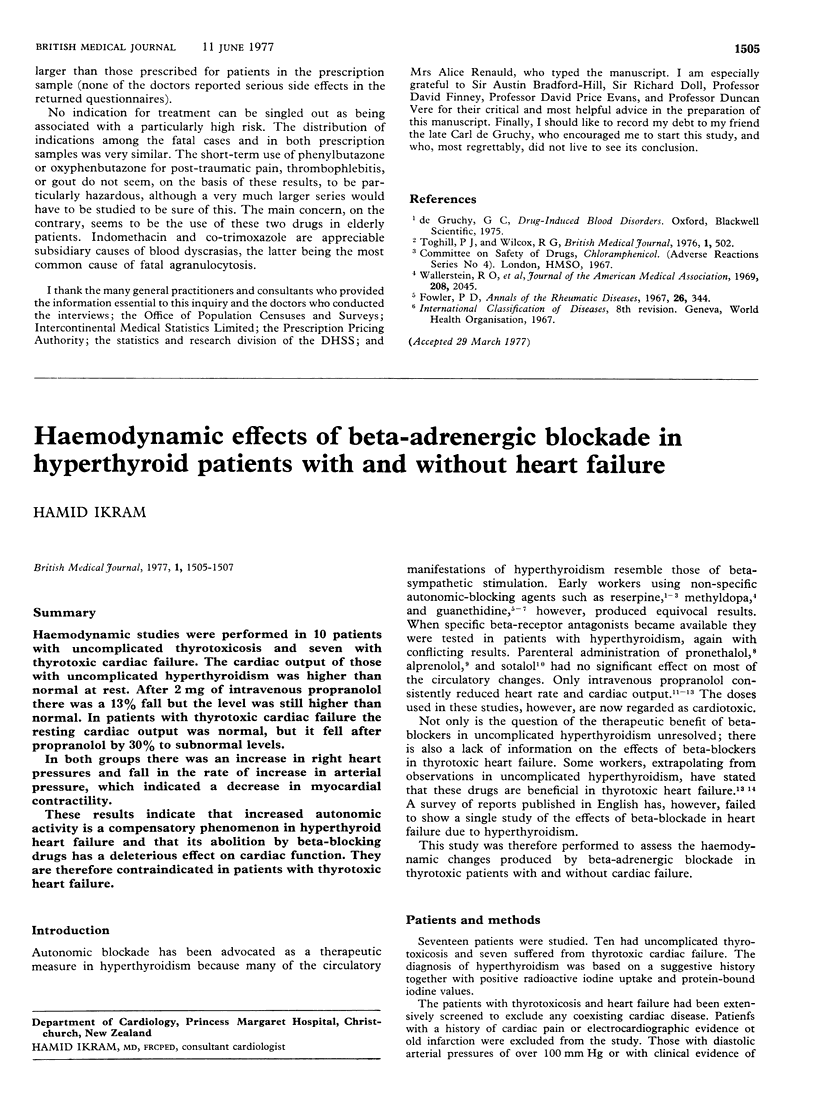
Selected References
These references are in PubMed. This may not be the complete list of references from this article.
- Toghill P. J., Wilcox R. G. Aplastic anaemia and hair dye. Br Med J. 1976 Feb 28;1(6008):502–503. doi: 10.1136/bmj.1.6008.502-a. [DOI] [PMC free article] [PubMed] [Google Scholar]


